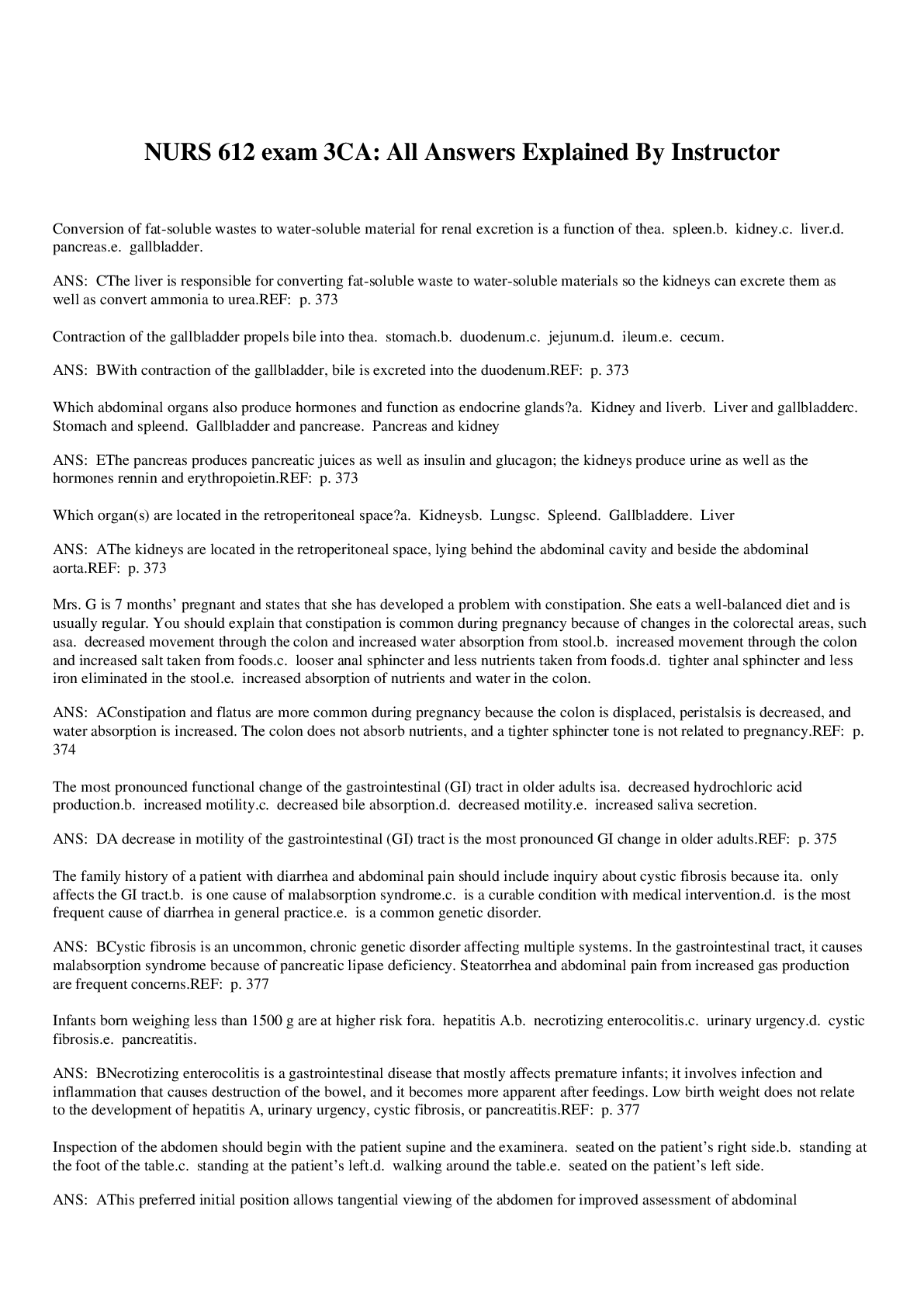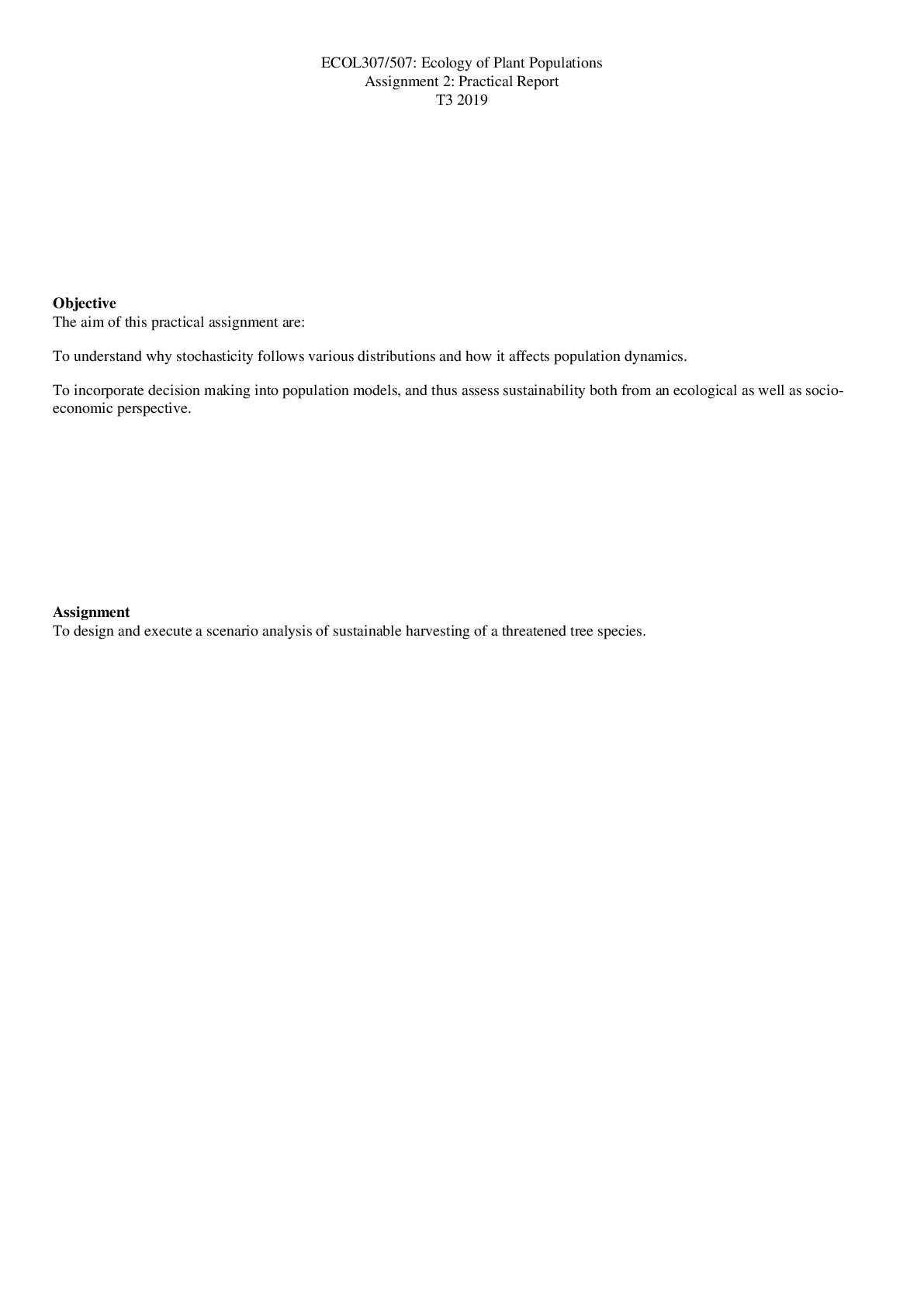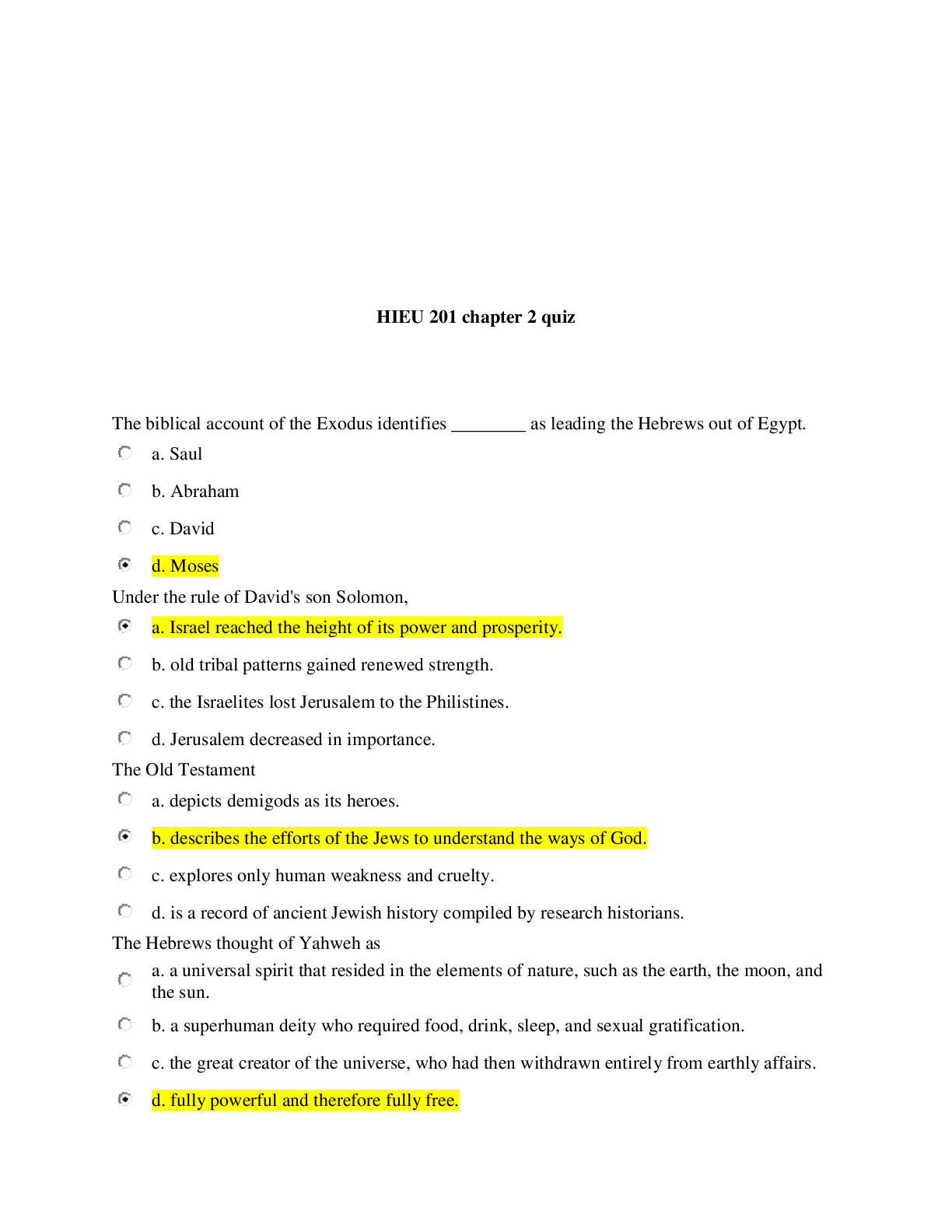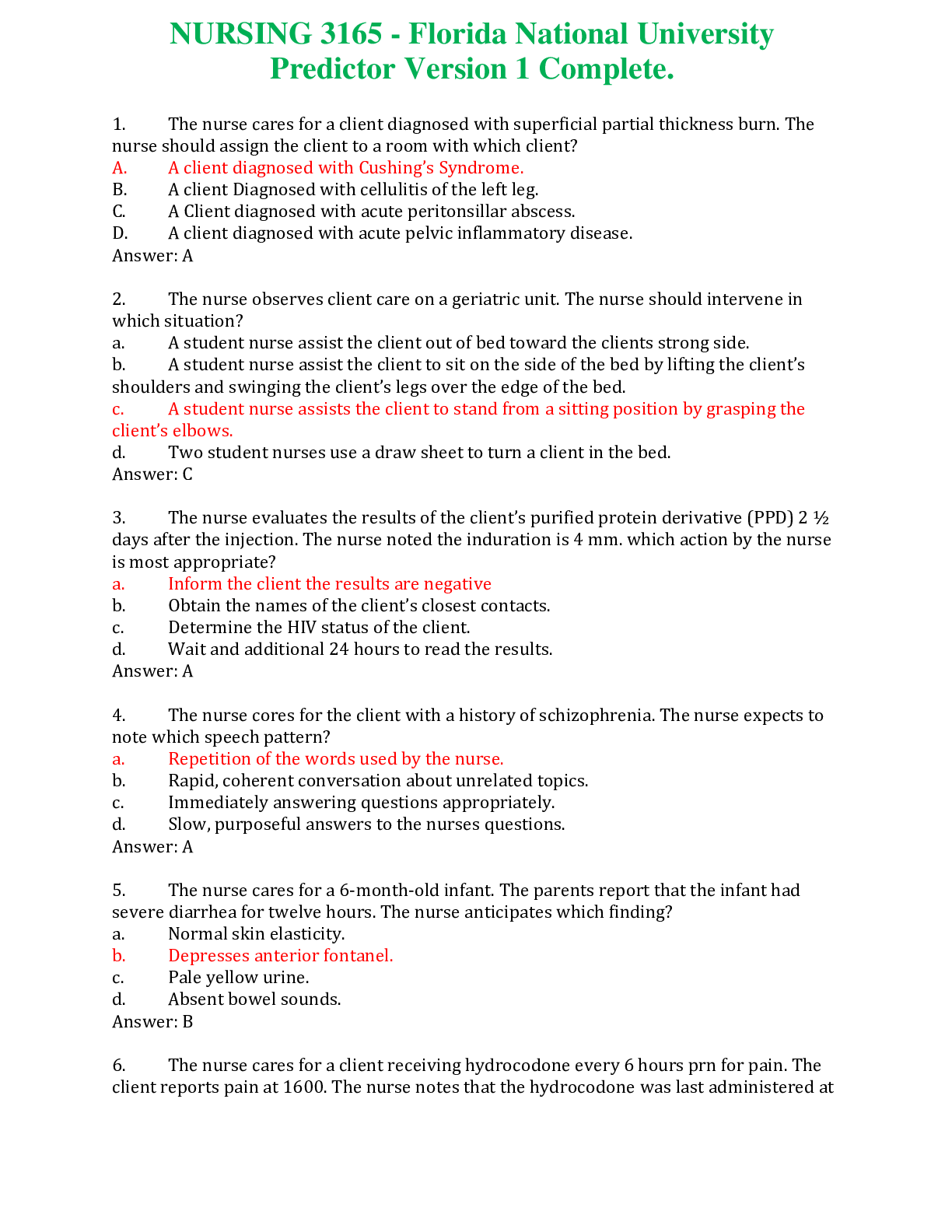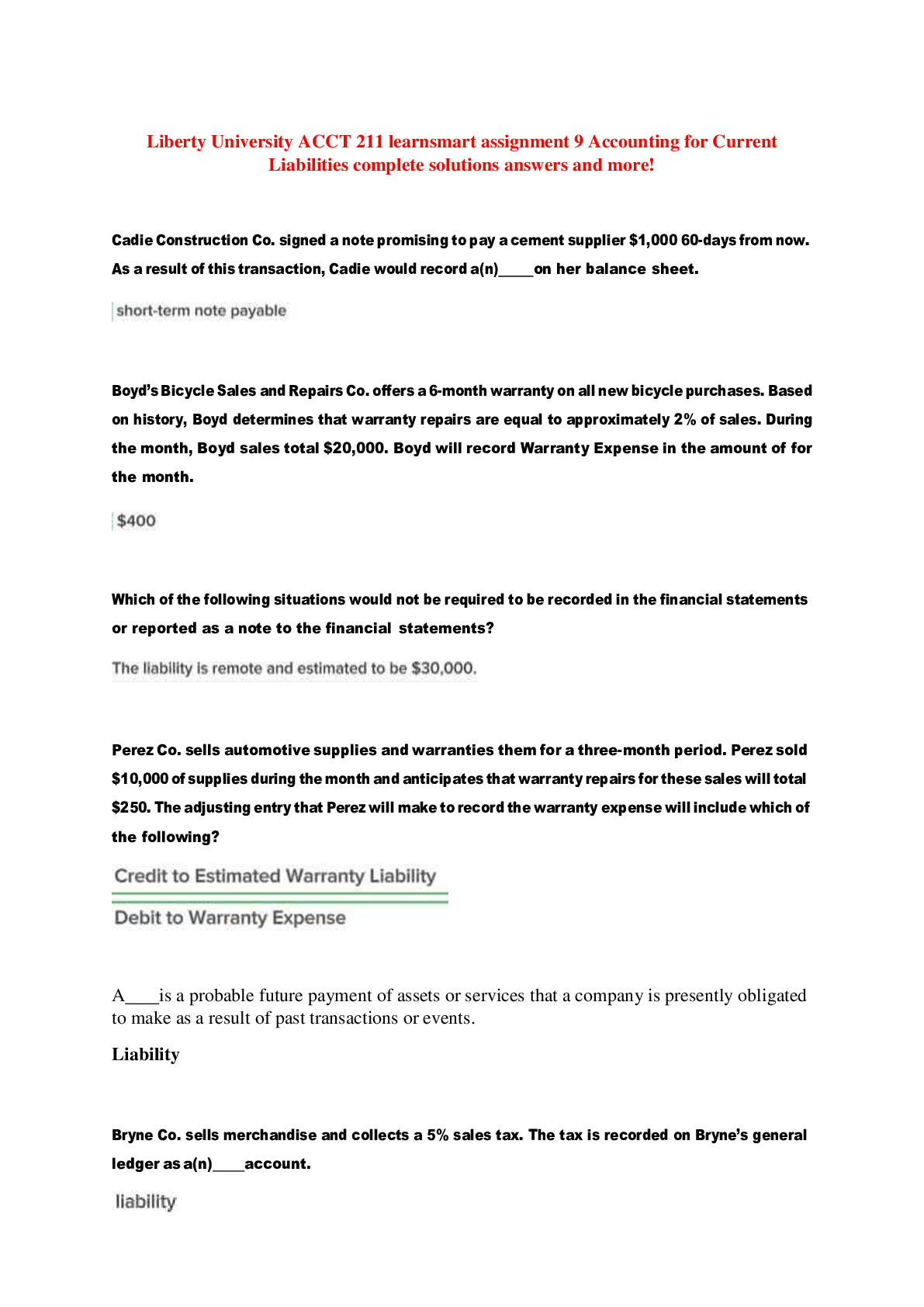Travel and Tourism > QUESTIONS & ANSWERS > T-6A Trans Check Questions (All)
T-6A Trans Check Questions
Document Content and Description Below
T-6A Trans Check Questions What are the 6 aspects of Crew Resource Management (CRM)? (Ref 11-248 1.8) - ✔✔a. Communication b. Crew/flight coordination c. Mission Analysis d. Risk management ... e. Situational Awareness f. Task management Which controls are in the FCP and not in the RCP? (Ref 11-248 1.14.1) - ✔✔a. Aux Battery switch b. Manual fuel balance c. ECS controls d. Parking brake e. Emergency gear extension f. PMU g. Firewall Shutoff Handle h. Gust lock What two things are required in order to have a positive transfer of aircraft control? (Ref 11-248 1.15.1) - ✔✔a. Positive verbal affirmation b. Physical shaking of the stick 4. What are the three means of clearing in priority order? (Ref 11-248 1.16) - ✔✔Eyes, Ears, and Traffic Advisory System (TAS) Visually, how do you know when you are on a collision course with someone else? (Ref 11-248 1.16.1.2) - ✔✔When the aircraft appears stationary in the canopy and has no line of sight. What are the basic rules you apply when handling an EP? (Ref 11-248 1.19) - ✔✔Maintain Aircraft control, Analyze the situation, Take proper action, and Land as soon as conditions permit When would you use a FEVER check and what does it stand for? (Ref 11-248 1.20.3) - ✔✔Use it when determining if you have an engine malfunction/fire b. Fluctuating fuel flow. A constant PCL setting should have no more than +/-10 PPH c. Excessive ITT d. Visual Signals; Smoke, flames, and oil on the windscreen e. Erratic engine operations f. Roughness; and engine making strange noises In what order do you trim the control surfaces? (Ref 11-248 2.4.2.5) - ✔✔REA: Rudder, Elevator, Aileron What are the 4 effects caused by having a propeller? (Ref 11-248 2.6) - ✔✔a. Slipstream Effect b. P-Factor c. Torque Effect d. Gyroscopic Effect What is adverse yaw? (Ref 11-248 2.11) - ✔✔It is the tendency of the aircraft to yaw away from direction of aileron input as a result of the increased induced drag caused by lift on the up-going wing. What is the difference between a skid and a slip? (Ref 11-248 2.12.3) - ✔✔a. A skid is excessive rudder deflection to the inside of the turn b. A slip can be induced by holding opposite rudder to the turn True/False: Motoring may be performed with the canopy open. (Ref 11-248 3.6.3) - ✔✔True True/False: A formal transfer of aircraft control is required for the brake check. (Ref 11- 248 3.9.1) - ✔✔False. No transfer of control is required for a brake check. What is the most common reference in order to taxi staggered? (Ref 11-248 3.9.4) - ✔✔Align the exhaust stack on the taxi line What is rotate speed? (Ref 11-248 4.3.2.1) - ✔✔85 KIAS no wind. Add one-half the gust up to a maximum of 10 knots with gusty winds. What is rotation attitude and the appropriate outside visual reference? (Ref 11-248 4.3.2.3) - ✔✔7-10 degrees nose high. Spinner on, or slightly below the horizon. Without any crosswind, you will need to deflect the control stick in which direction to compensate for torque? (Ref 11-248 4.3.3.3) - ✔✔Slightly to the right. When applying crosswind controls on takeoff roll, when do you take the crosswind controls out? (Ref 11-248 4.6) - ✔✔Immediately after takeoff. Allow the aircraft to crab into the wind to prevent the upwind wing from dipping toward the ground. Attain what minimum airspeed and altitude prior to initiating a turn following a takeoff? Does this apply during turns in the VFR pattern? (Ref 11-248 4.8) - ✔✔140 KIAS and 400' AGL, the 400' restriction does not apply to the VFR pattern. What is the minimum airspeed in the closed pattern? (Ref 11-248 5.7.2) - ✔✔120 KIAS Where is the break zone? (Ref 11-248 5.6.3.1) - ✔✔. Between the approach end and 3,000 feet down the runway Landing flaps should be used when heavy weight flaps up landing distance is equal to or greater than __ percent of runway length. (Ref 11-248 5.3.1.2) - ✔✔80% Landing flaps are discouraged with crosswinds greater than __ Knots due to the potential stresses the side loads impart on the landing gear. (Ref 11-248 5.3.1.2) - ✔✔10 knots When is a full stop with flaps takeoff recommended? (Ref 11-248 5.3.2.3) - ✔✔When crosswinds are 10 knots or greater, or in gusty wind situations If landing distance is not a factor, when can flaps up be used for a full stop? (Ref 11-248 5.3.3.2) - ✔✔When crosswinds greater than 20 knots are in effect What power setting should get you 200 KIAS level flight in the pattern during normal wind conditions? (Ref 11-248 5.5.2.2) - ✔✔50% + 1% per 1,000 feet MSL During a normal pattern, no wind spacing is approximately ___ to ____ mile. (Ref 11- 248 5.7.3.4) - ✔✔0.7 to 1 mile For a no-wind pattern, the desired perch point occurs when the runway threshold is approximately __ degrees off your shoulder. (Ref 11-248 5.8.2) - ✔✔45 Degrees What situations would cause you to not perch/breakout (SNAPE)? (Ref 11-248 5.8.3.3) - ✔✔Straight in is inside 2 miles and not in sight Not configured by the perch point Another aircraft in the final turn and not in sight Pattern spacing cannot be maintained within the normal ground track ELP is inside low key and normal spacing cannot be maintained Approximately how many degrees of bank should be used in the final turn? What is the maximum? (Ref 11-248 5.8.3.7) - ✔✔30 degrees; 45 degrees If greater than 45 degrees of bank is required to complete the final turn, what should you do? (Ref 11-248 5.8.3.7) - ✔✔Initiate a go around Roll out on extended runway centerline how far from the runway? What degree glidepath? (Ref 11-248 5.8.3.8) - ✔✔½ to ¾ mile final; 3 to 4 degree glide path For a 1,000 foot pattern, halfway through the turn the aircraft altitude should be approximately ____ feet AGL. (Ref 11-248 5.8.4.3) - ✔✔600' Above 700-800 pounds of fuel weight, approximately __ to __ knots above final turn and final airspeed may be required to fly on speed AOA. (Ref 11-248 5.9.3.4) - ✔✔3 to 5 knots True/False: Add one half the gust factor to your final turn airspeed. (Ref 11-248 5.9.3.5) - ✔✔False. You only add gust factor to all airspeeds in line with the runway (Final, Threshold crossing, touchdown, takeoff) With flaps landing or takeoff, begin your descent from a straight in when the threshold of the runway is where in the windscreen? What about flaps up? (Ref 11-248 5.10.4.1) - ✔✔When the aimpoint is in the lower one-third of the windscreen; When the spinner reaches the threshold During a straight in approach, slow to what speed once configured prior to starting your descent on glidepath? (Ref 11-248 5.10.3.4) - ✔✔Slow to final approach speed once configured The landing is divided into what three phases? (Ref 11-248 5.11.2) - ✔✔Roundout, Flare and touchdown, and landing roll At the threshold, the airspeed should be approximately __ knots below final airspeed. (Ref 11-248 5.11.3.1) - ✔✔10 kts Use caution when braking at speeds above ___ KIAS. (Ref 11-248 5.11.3.3.2) - ✔✔80 KIAS Approximately how long after main gear touchdown does N1 revert back to ground idle? (Ref 11-248 5.11.3.3.3) - ✔✔4 seconds What is minimum airspeed and maximum bank in the closed pullup? (Ref [Show More]
Last updated: 1 year ago
Preview 1 out of 36 pages
Instant download

Buy this document to get the full access instantly
Instant Download Access after purchase
Add to cartInstant download
Reviews( 0 )
Document information
Connected school, study & course
About the document
Uploaded On
Aug 26, 2022
Number of pages
36
Written in
Additional information
This document has been written for:
Uploaded
Aug 26, 2022
Downloads
0
Views
76

.png)
.png)
.png)
.png)
.png)
.png)
.png)
.png)
.png)
.png)
.png)

